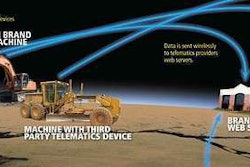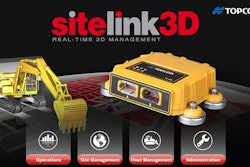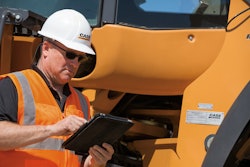
While telematics technology is not new to the industry, its adoption (or, current lack thereof) is one that some are calling vital to successful construction companies. But how successful a company, and more specifically an equipment manager, is with using telematics is a matter of doing something with all the data.
Information Overload
Possibly the biggest benefit of telematics is that you do get a lot of data. However, this data is not necessarily translated into information that can easily help you make decisions.
While real-time statistics on equipment usage and location monitoring is vital to an equipment manager’s job, the sheer volume of data can be overwhelming. Without a software system for equipment management that provides filtering, organization, and analysis, data is just data and fails to provide the information needed to make important fleet decisions.
Incomplete data
Consistent data tells a complete story, such as which pieces of equipment were used where and for how long. But when there are inconsistencies or missing data, you get holes in your fleet’s story. It is the rare contractor that has the same brand of vehicles with the exact same telematics device.
With varying devices and reporting capabilities, equipment managers only have some of the data some of the time, not all of the data, all of the time for every piece of equipment.
Utilizing limited data is sustainable for the management of individual pieces on a short-term basis, but not the long term management of entire fleets of equipment. Standardized data across all pieces of equipment can be turned into useful information that lets you know your fleet’s average utility, size, and make up, and that helps you make decisions such as whether to adjust your fleet’s average age or if you should be buying or leasing equipment.
With holes in the data, equipment managers can’t make good decisions, begging the need for a complement to telematics.
The rest of the story
Even when data is distilled into useful information, equipment managers may not have a full understanding of their fleet’s performance. Telematics gives you data points that tell you the operating statistics of a piece of equipment. Where was it? How long did it run? How much fuel did it consume?
But this doesn’t tell you why your equipment is operating in its current state. Maybe a component is broken because regular maintenance hasn’t been performed or more fuel is being consumed than previous reports. Outside influences, such as weather conditions, job site terrain and preventive maintenance activities aren’t recorded with telematics. Equipment managers end up investigating on their own the answers to these why questions.
By having additional systems in the field for contextual data entry, there isn’t a need to play detective—you get the why not just the what
Complementary Equipment Software
Even though telematics provide significant amounts of data, having a way to turn that data into information is necessary for obtaining all of the benefits of telematics. This is where complementary equipment software becomes vital to making equipment decisions.
Whether you have separate equipment management software or it is tied into a larger ERP system, the latest in construction software technology allows for the easy import and export of all of your data.
With cloud-computing, data collected in the field can be automatically imported into another software application using web services. And true cloud-based software is usable on any device, which means that your field employees can enter supporting information to tell the complete story of your fleet’s usage.
About the Author
John Chaney is the President and Co-Founder of Seattle-based construction software provider Dexter + Chaney. He can be reached at [email protected], and more information on the company can be found at www.dexterchaney.com.










